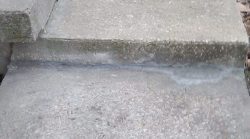Foundation movement is a serious concern for homeowners, as it can lead to significant structural issues if left unaddressed. Recognizing the early warning signs of foundation movement is crucial for taking timely action and preventing further damage. In this blog post, we will explore common signs of foundation movement and provide guidance on how to monitor and detect these indicators early on. By staying vigilant and proactive, homeowners can protect their homes and ensure the long-term stability of their foundations.
- Visible Cracks in the Foundation or Walls: One of the primary signs of foundation movement is the appearance of cracks. These cracks can manifest in various areas, including the foundation itself, interior walls, or exterior brickwork. Look out for diagonal cracks, stair-step cracks, or widening cracks, as they may indicate ongoing foundation shifting.
- Uneven or Sloping Floors: Foundation movement can cause floors to become uneven or sloping. If you notice a noticeable difference in floor levels or areas that feel uneven or sagging, it could be a sign of foundation problems. Pay attention to any changes in floor alignment or the presence of gaps between the floor and baseboards.
- Sticking Doors and Windows: Foundation movement can affect the alignment of doors and windows, causing them to stick or not close/open smoothly. If you’re experiencing difficulty when operating doors or windows, especially in specific areas of the house, it may be an indication of underlying foundation issues.
- Separation of Molding or Trim: As the foundation shifts, you may notice gaps or separations between molding, trim, or caulking around windows, doors, or ceilings. These separations occur due to the movement of the underlying structure and should be inspected further to assess the extent of foundation movement.
- Interior Wall Cracks: Keep an eye out for cracks appearing on interior walls, particularly around doorways, windows, or corners. These cracks may start small but can widen over time if foundation movement continues. Document the size, location, and progression of these cracks to provide valuable information to foundation experts during inspections.
- Misaligned or Cracked Exterior Features: Foundation movement can also impact exterior features of your home. Look for signs such as misaligned bricks, cracked brickwork, or shifting of exterior siding. These issues suggest potential foundation problems and should be assessed by professionals.
- Plumbing and Drainage Issues: Foundation movement can cause stress on plumbing and drainage systems, leading to leaks, backed-up drains, or irregular water flow. Keep an eye out for sudden changes in water pressure, persistent plumbing issues, or noticeable changes in your water bill, as these can be indications of underlying foundation movement.
Monitoring and detecting early warning signs of foundation movement is crucial for maintaining the structural integrity of your home. By staying vigilant and regularly inspecting your foundation and surrounding areas, you can identify signs of movement and take timely action to mitigate potential damage. If you notice any of the mentioned warning signs, it’s essential to consult with foundation experts, such as Advanced Systems of Northeast Kansas, for a thorough inspection and professional guidance. Remember, early detection and intervention are key to protecting your home and ensuring the long-term stability of your foundation.





